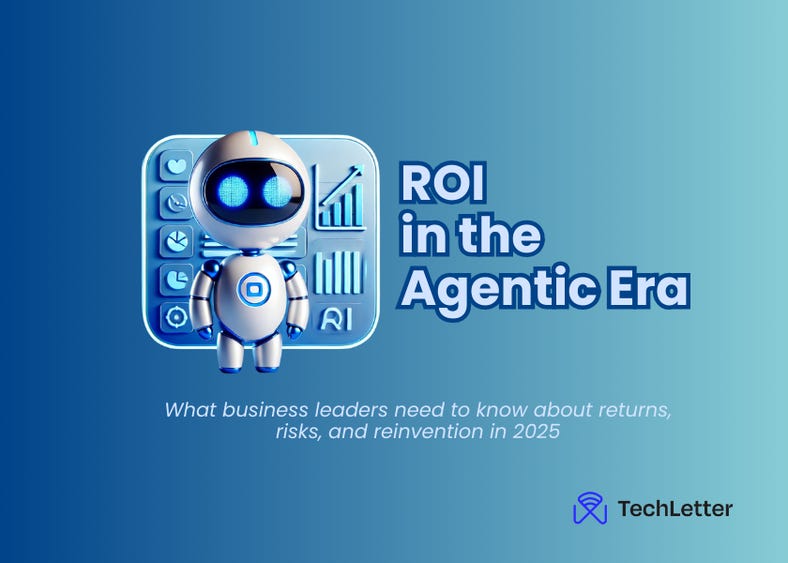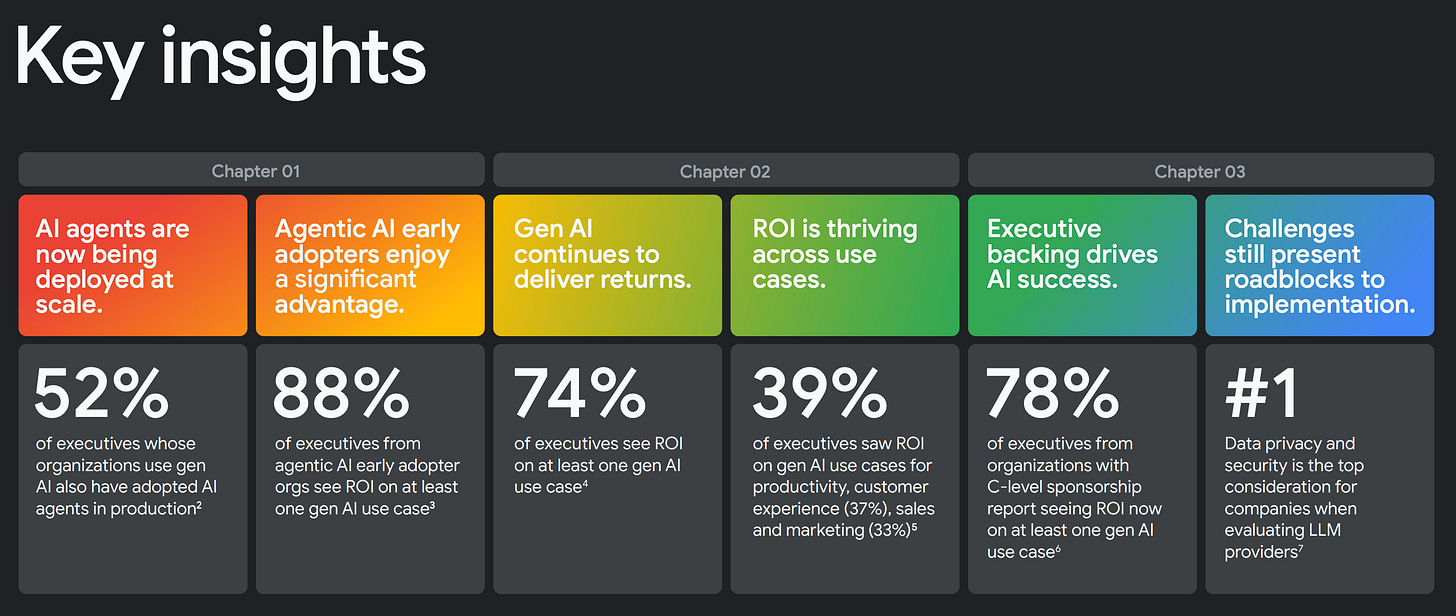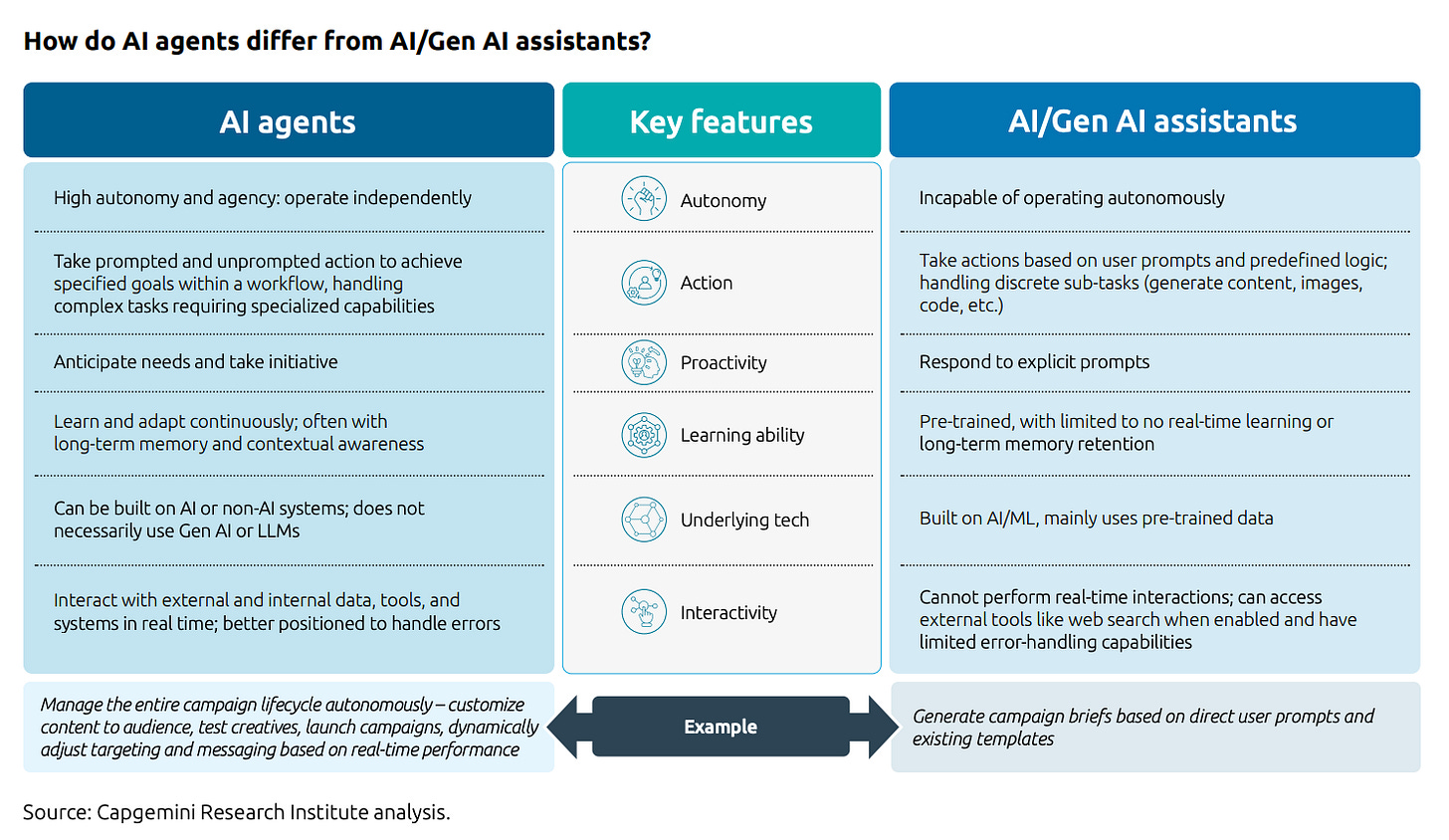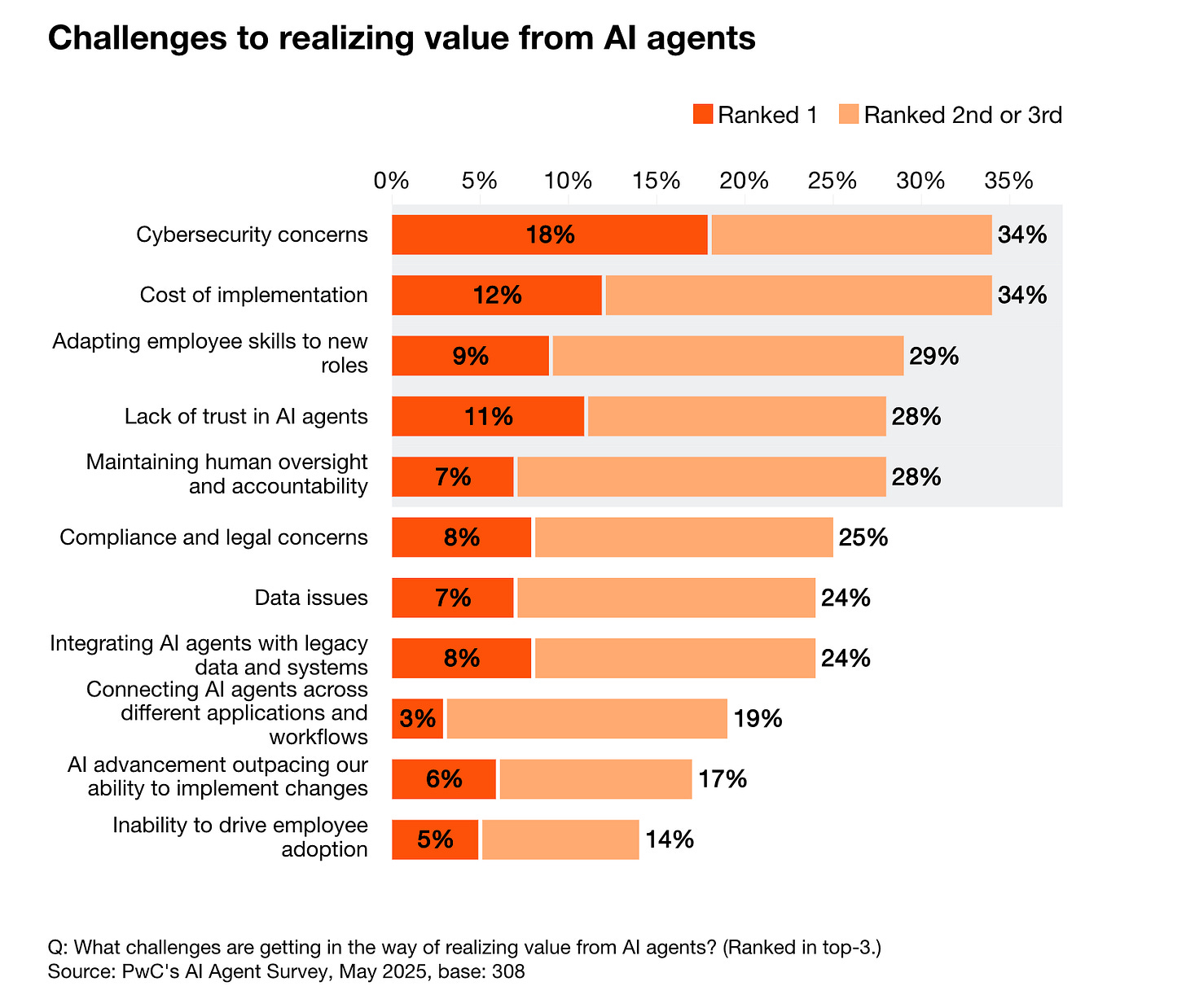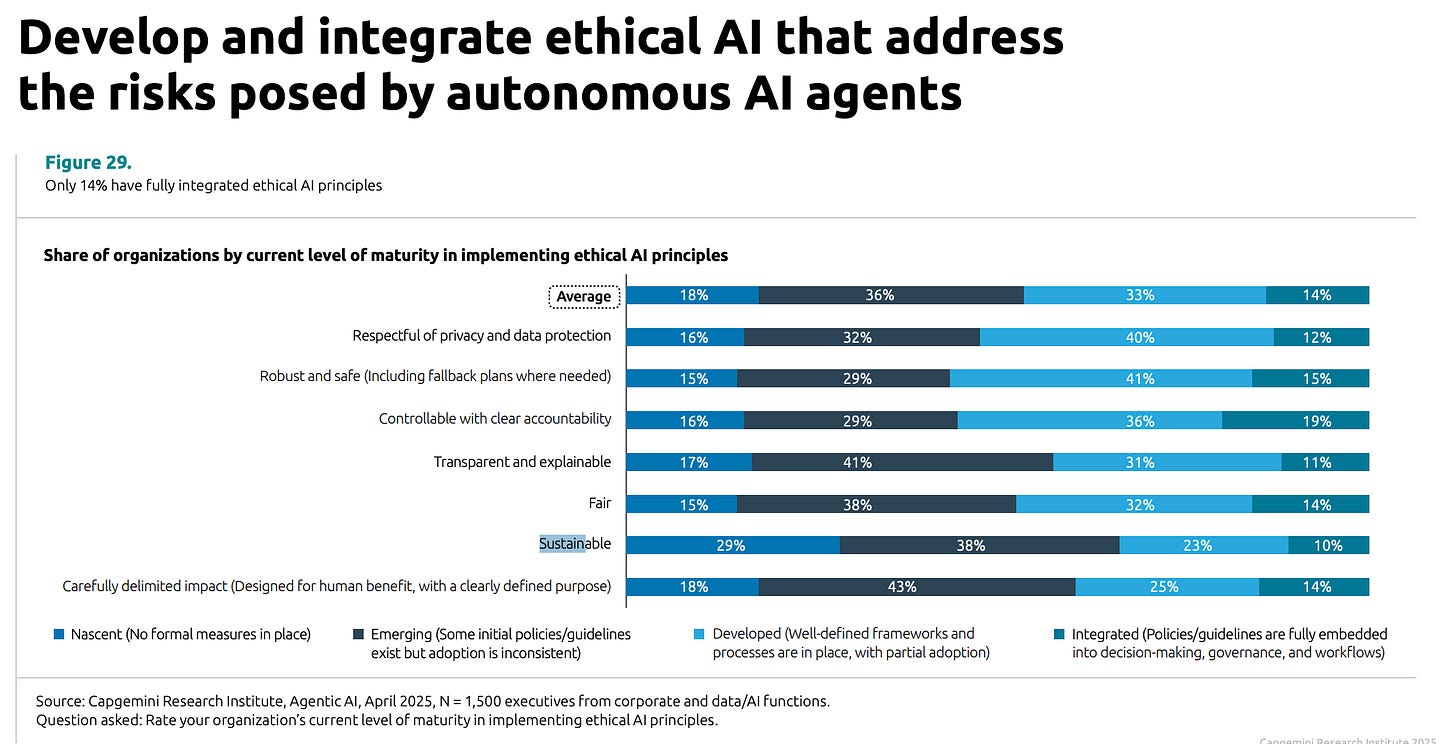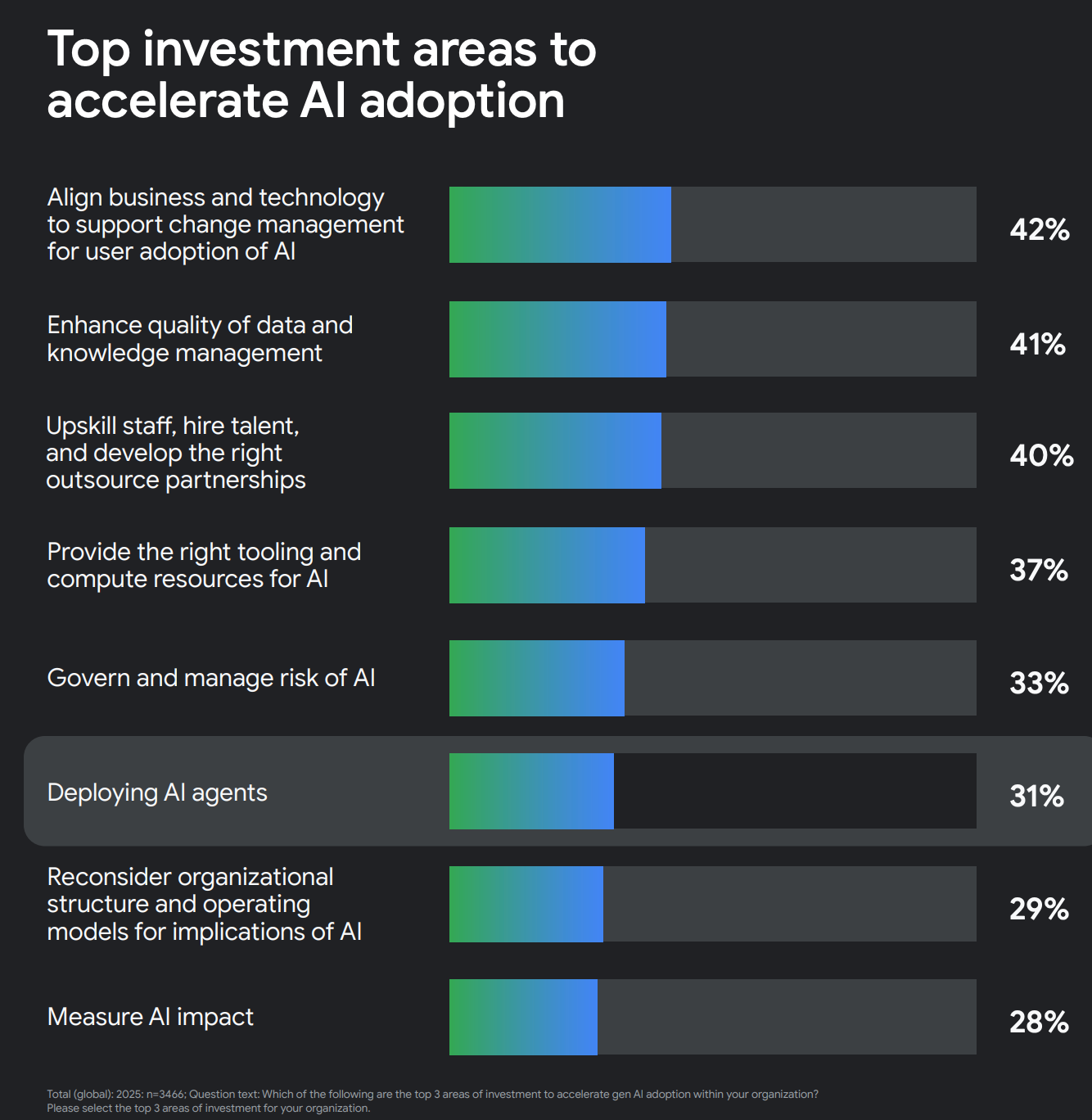ROI in the Agentic Era
What business leaders need to know about returns, risks, and reinvention in 2025
In 2024 Wrapped, we mentioned that 2025 would be the year of Agentic AI. Did we predict it accurately? Yes, we did.
Each day, AI feels less like a tool and more like a colleague — one that takes notes, drafts the follow-up, schedules the next call, and pulls the numbers while we’re still sipping our coffee. I have to admit: I love this feeling. These are the AI agents: not just copilots whispering in our ear, but sidekicks ready to execute tasks, connect systems, and make decisions under our guardrails.
This year marks a turning point, because now we finally see AI investments turning into measurable value. Businesses are no longer asking “should we use AI?” but rather “how do we scale it, and where is the return?” Yet, there is a nuance: according to McKinsey’s State of AI 2025, even though 72–78% of companies are using AI, only 1% have reached maturity. More strikingly, over 80% of companies say they have not seen a tangible impact on EBIT from AI adoption. The open question is whether AI agents can actually help close this maturity gap.
In contrast, Google’s new report, The ROI of AI 2025, highlights the other side of the story: companies that embraced AI agents early are already reporting measurable returns in productivity, customer experience, and growth.
TL;DR
The Agentic Shift
Every AI wave had its role: predictive analyzed, generative created. 2025 is different. Agentic AI acts. Capgemini defines agents as goal-driven programs that make decisions and take actions within a business environment. They go beyond assistants: agents manage end-to-end workflows, connect to real-time tools and data, and use memory to adapt and recover from errors. Assistants, by contrast, stay limited to prompt-based support for smaller tasks.
This shift is not theory. Google’s new ROI of AI 2025 report shows 52% of executives using generative AI now deploy agents in production, and 88% of early adopters report ROI from at least one generative AI use case. But this isn’t just a Google finding.
Other studies confirm the same direction:
McKinsey (2025): describes the “gen AI paradox” — nearly 8 in 10 companies use gen AI, but more than 80% see no material earnings impact, and only 1% consider themselves mature. McKinsey argues agents can break this cycle by shifting AI from reactive copilots to proactive, workflow-driven collaborators
Gartner (2025): predicts at least 15% of day-to-day work decisions will be made autonomously through agentic AI by 2028, up from 0% in 2024.
The lesson is twofold: proving ROI with the first agent makes it easier to justify scaling to the next ten, and early movers are already committing more than half of their future AI budgets to agents. But scaling requires more than hype — it demands re-architecting workflows, building governance, and ensuring agents deliver beyond productivity pilots.
ROI Realities: Where the Returns Are Emerging
The question is no longer if AI delivers ROI, but where it concentrates first. The latest findings show returns cluster in five domains — and the biggest shift is in time-to-value: initiatives moving from idea to impact in months, not quarters.
Productivity: 70% of executives report higher output, sometimes doubling.
Customer Experience: 63% see faster support and more personalization, moving AI from efficiency to growth.
Business Growth: 56% connect AI directly to revenue, with early adopters reporting 6–10% annual uplift.
Marketing: 55% cite faster campaigns and personalized content at scale.
Security: 49% report stronger defenses, with agents detecting and fixing issues faster than humans.
PwC’s AI Agent Survey (2025) reinforces the trend: two-thirds of companies using agents already see measurable productivity gains, and nearly nine in ten plan to raise AI budgets in the year ahead.
But McKinsey cautions that impact is uneven. Horizontal tools like copilots spread fast, but vertical, process-deep agent use cases — the ones tied to EBIT — remain stuck in pilots. The barrier is not the models but the organization: siloed AI teams, poor data pipelines, and cultural resistance. To break through, firms need what McKinsey calls an “agentic mesh” — infrastructure and governance that embeds agents directly into workflows
The message is clear: ROI emerges in concrete, narrow domains first. Scaling it into enterprise value depends less on technology and more on redesigning processes, governance, and culture.
Blind Spots and Challenges
The Google report itself acknowledges the two most common barriers: data security and systems integration. In fact, more than a third of leaders say data privacy is their top concern when choosing large language model providers. Without robust governance, the very systems that promise efficiency could expose organizations to new risks — from accidental data leaks to compliance failures.
Security and integration remain core barriers. Google’s ROI of AI 2025 report shows that data security and systems integration are the top two obstacles for companies adopting agents. More than one-third of leaders cite data privacy as their biggest concern when selecting LLM providers.
High attrition risk. Gartner warns that over 40% of agentic AI projects will be scrapped by 2027, either because of escalating costs or lack of clear business value. The report also highlights “agent-washing” — vendors rebranding assistants as agents without real autonomy.
Ethics and governance are lagging. Capgemini finds that while many executives expect strong ROI, only 14% of organizations have fully embedded ethical AI principles into governance, and sustainability is the least integrated area.
Workforce readiness is weak. PwC shows that leaders see change readiness, adoption, and integration as the biggest barriers to scaling agents. At the same time, 67% of executives expect agents to reshape roles within the next 12 months.
Trust is fragile. PwC also shows confidence varies sharply by task: 38% of executives trust agents with data analysis, but only 20% are comfortable letting them handle financial transactions.
Scaling paradox. McKinsey highlights that fewer than 10% of vertical agent use cases progress beyond pilots. The problem is less technical capability than organizational readiness: siloed teams, weak data pipelines, and missing change management. Without an “agentic mesh” — cross-functional squads, re-architected workflows, and governance — most projects stall.
Environmental costs. Agentic systems are compute-hungry. Global data centers already consume 415 TWh of electricity (≈1.5% of global demand), with forecasts pushing this to 945 TWh by 2030 if AI adoption continues at current pace (IEA, 2024).
In Capgemini’s figure we can directly see that sustainability remains the least embedded dimension of AI governance.
Skills and culture gaps – Deploying agents isn’t just about budget and technology. It’s about whether teams are ready to integrate them into daily work. Many companies underestimate the investment needed in training, change management, and AI literacy.
Investment Trends for an AI-Ready Future
2025 capital is shifting from pilots to foundations: adoption programs, integration, and the infrastructure that lets multiple agents work across processes.
Closing Reflection: Beyond ROI
Every AI wave has had a role: predictive models helped us understand, generative models helped us create, and now agentic AI helps us act. The sidekick we once imagined is here — not a futuristic fantasy, but an everyday colleague embedded in workflows.
The lesson from the data is clear: ROI is real, but fragile. Google shows early adopters gaining measurable returns, PwC highlights the urgency of organizational readiness, McKinsey reminds us that most vertical use cases are stuck in pilots, Capgemini points to governance and sustainability gaps, and Gartner warns that 40% of projects may never survive to scale.
For business leaders, the takeaway is sharper than “how much ROI can we show?” The real question is: what kind of ROI do we want to build? One built on:
Governance that protects trust and security,
Workforce investment that turns anxiety into capability,
Sustainability that ensures today’s efficiency doesn’t create tomorrow’s liability.
Because the companies that will lead in the agentic era are those that redesign workflows, build the mesh, and make change management a budget line — not those that run more pilots.



